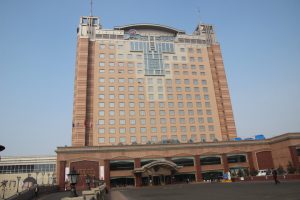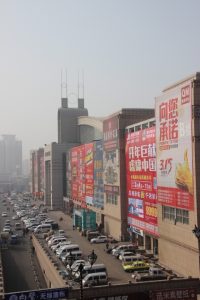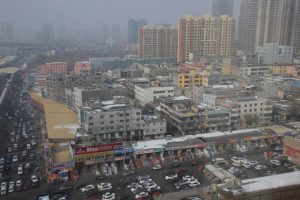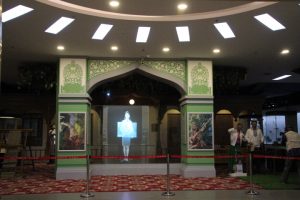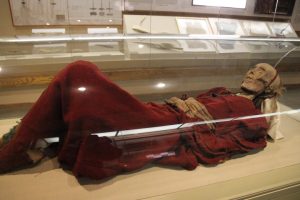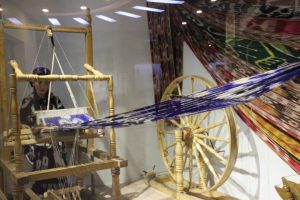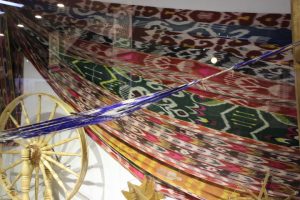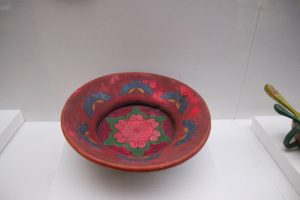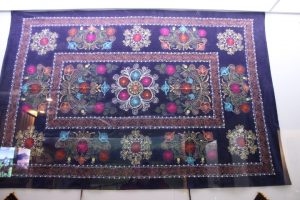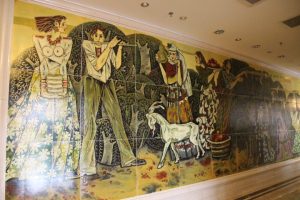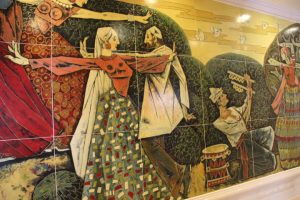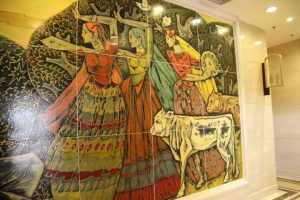We woke just before 9:00 a.m. to find it barely daylight and still covered in freezing fog and the morning ‘musak’ led by ‘O come all ye faithful’!
As we write in the massive lobby of the hotel whilst awaiting delivery of the next set of train tickets for Xi’an, the sun is burning off the fog. Five floors below the lobby is a shopping centre surrounded by small outlets rather like an English out of town retail park but made up of market stalls in the form of shops. This is agglomeration on a massive scale because each floor and each area of the shopping centre sells the same things. Floor 1 was kitchenware and tea basically. Floor 2 had security cameras, mobile phones, copiers, talking weighing scales, humidifiers and drones. Hundreds of outlets all selling the same things.
Urumqi is not an old city but is a fast growing Central Asian hub. It is the home to a great mix of people. As we saw from the train the skyline is always changing with high-rise construction and renewal of existing buildings. Urumqi’s main streets, according to a guidebook, are wide and tree-lined but our location like everything we saw from the taxi yesterday is dominated by high-rise buildings and urban expressways.
The Xinjiang Autonomous Region Museum is massive and features many artefacts from the Silk Road.
The highlight is, the locally famous, ‘Loulan Beauty’ one of the 3800 year old desert-mummified bodies of Indo-European ancestry that were put on display in the 1990s. There are silks and sculptures from the Astana region of Kazakhstan which date from the Tang dynasty along with specimens of grains, nuts, dried fruits, painted wooden figures and naan bread stamped with the same pattern as used today. This is exactly the same as the Green market in Almaty, an excellent example of historical continuity. There are also models of ancient houses and yurts, clothing and household utensils. Some of the yurts not only showed daily life but also the means of constructing the well-insulated houses.
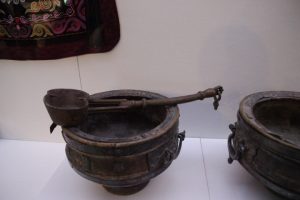
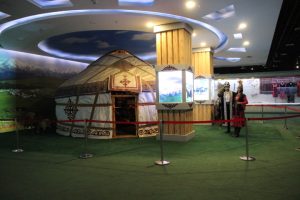
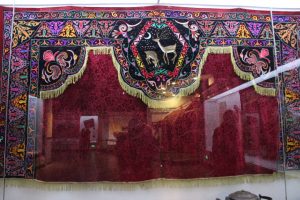
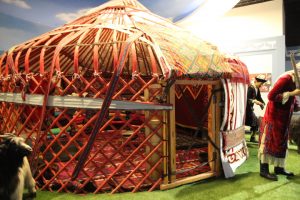
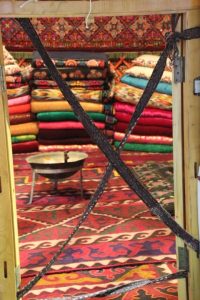
The Silk Road artefacts were brought to life through a model market town/caravanserai which showed artisans and traders at work in the desert after crossing the Tien Shan mountains. The artefacts and dioramas are repeated in a modern version along a wall in the hotel lobby which represents a giant cupola/fabric tent along the Silk Road. All of this shows that the life of the past continues in the life and culture of all regions that we have visited in Central Asia.
